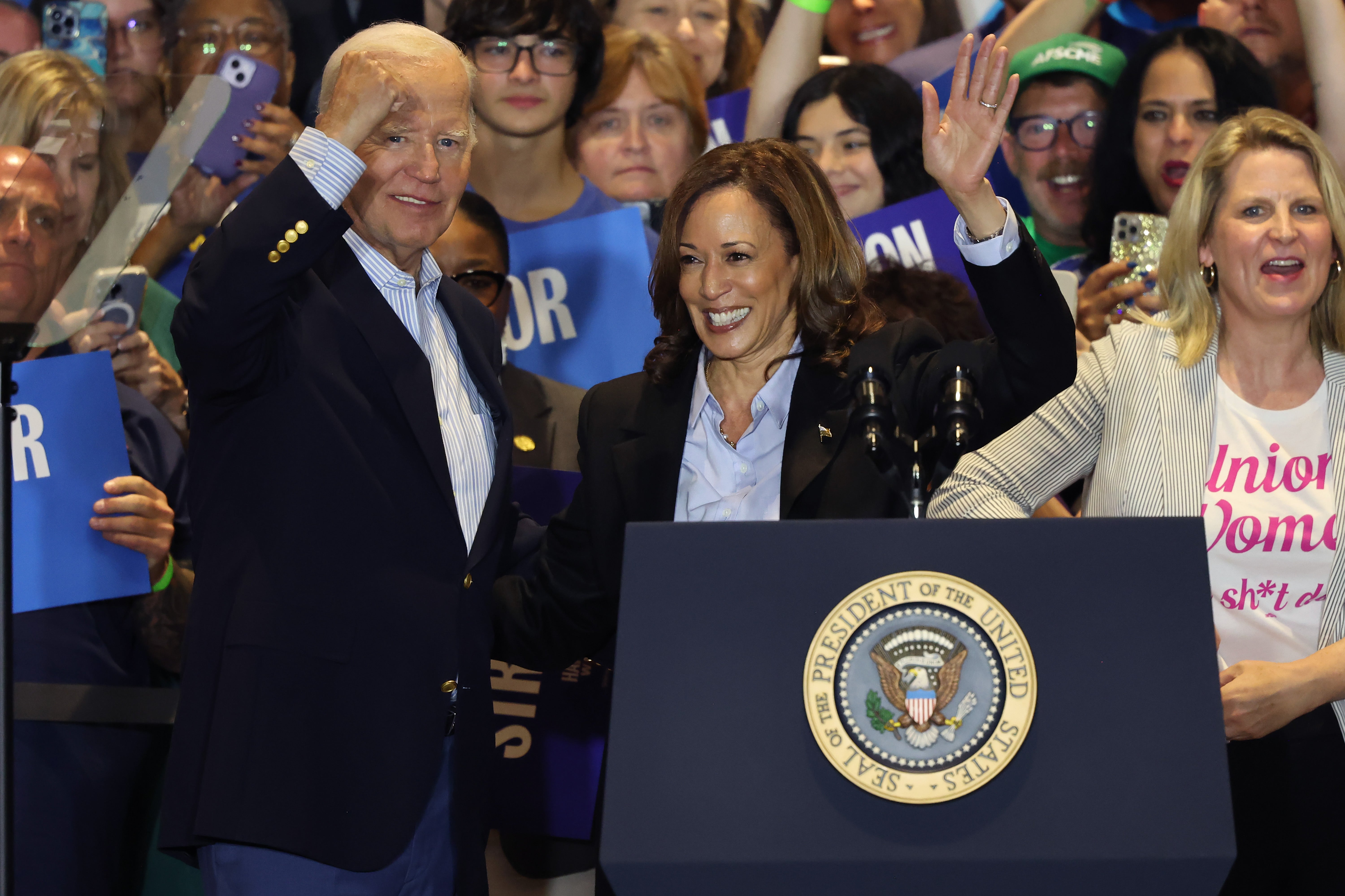
Sign up for the daily Inside Washington email for exclusive US coverage and analysis sent to your inbox
Get our free Inside Washington email
Get our free Inside Washington email
Kamala Harris is running on a campaign promising change, heralding a “new way forward” at last month’s Democratic National Convention. But the data shows voters are not convinced that the vice president is all that separate from incumbent President Joe Biden, according to exclusive polling from Savanta.
Over half of registered voters (56 per cent) believe that Harris’s policy platform will be significantly similar to Biden’s, compared to 7 per cent who feel the same about Trump.
Just a third (30 per cent) believe her policies will be different, according to the post-debate poll of 2,000 Americans.
Over 4 in 10 voters (41 per cent) believe that Harris has had a significant influence over the current administration’s policy positions, compared to 26 per cent who believe she had little influence. Meanwhile, voters are split (37 per cent each way) as to whether Harris’s impact as vice president has been positive or negative so far.
What’s more, a third (35 per cent) of voters believe that Harris had “more or much more” influence over Biden’s policies than previous vice presidents in history.
“The challenge for Kamala Harris is that she is attempting to frame herself as the ‘change’ candidate, while in the eyes of many of the public, her victory would simply mean more of the same,” says Emma Levin, associate director at Savanta. “That is an issue for the Democratic candidate for president, as voters are broadly unhappy with the current direction of travel for the US.”
Immigration and inflation could hurt Harris’s chances
When specifically asked which policy approaches from the Biden administration could “hurt” or “help” Harris, most issues did not lend a helping hand to the Democratic candidate.
Savanta reserach analyst Ethan Granholm explains: “Voters see Harris as having a significant role in many of the current administration’s policies. Her team will need to tread through difficult waters to figure out how to use Biden’s policies as a tool, and not an obstacle, in their messaging.”
Voters said that the Biden administration’s policies on immigration and inflation would hurt Harris’s public perception most of all.
The Harris team has made efforts to rebrand the Democratic candidate as stricter on immigration, with ad campaigns focusing on her experience as a prosecutor, cracking down on “drug cartels and jailed gang members”. But Republicans have sought to pin down Harris for current tensions at the border, with Representative Marjorie Taylor Green telling the Independent in July: “She’s been the vice president. She owns all the failures of the past nearly four years — the wide open border, over 10 to 12 million illegal aliens in our country.”

The two policy fields which had an overall positive impact on Harris’s perception were climate change and healthcare.
This may not be surprising, since one of the Biden administration’s biggest policy acheivements has been passing the Inflation Reduction Act (IRA) in 2022, which had a focus on reducing carbon emissions. The IRA has added nearly 150,000 clean energy jobs to the US economy, according to a report from E2.
Interestingly, although voters had an overhwelmingly negative view of current economic and inflation policies, there was a relatively even split between those who thought that Biden’s position on jobs would hurt or help Harris’s campaign.
The employment rate in the US (labor force participation rate) is now at 62.7 per cent, up slightly from the same month in 2020, when Donald Trump was president.
However, labor force participation has not gone back to pre-pandemic levels, which were at 63.3 per cent in January of 2020.

 By The Independent (World News) | Created at 2024-09-25 15:00:21 | Updated at 2024-09-30 11:40:08
4 days ago
By The Independent (World News) | Created at 2024-09-25 15:00:21 | Updated at 2024-09-30 11:40:08
4 days ago



